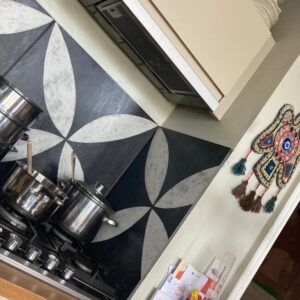ARTICLE
I can design too
7:35:39 3 May 2023
33.8688° S, 151.2093° E
The following article by architect and researcher Dr Fiona Young – called Comfort, convenience or control: Optimising the student learning experience, and which I’ve taken the liberty of prefacing with I can design too – makes me think of two things.
First, my seven-year-old son’s love for taking my phone off around the house to ‘take pictures’ – hundreds of them. The result: a moodboard of a world I share but quite unlike the one I thought we all lived in.

Second, in a previous life I was a primary school teacher, and remember spending as much time as I did on planning a term’s work on designing the environment in which that learning took place. I think I thought, to bastardise Le Corbusier’s conceit, I was making a machine for learning. Truth is, I was still designing young peoples’ worlds through what Young might call the teaching lens.
All of which makes the following call by Young for a much better understanding of what it means to design for the comfort of children – through the lens of the child, and not for our convenience or as a means of control – such an important area of study, both in and outside of education. Here she is:
Comfort, convenience or control
Optimising the student learning experience
I’m struck by the number of times I’ve heard children say that their flooring or seating (in relatively new school facilities) is ‘itchy’. Children are incredibly perceptive, and often way more sensitive to the environment than adults. When I think about how decisions are made about tactile finishes, they’re often assessed (by adults) by their colour and pattern, their washability, their rub count, warranties, and sustainability ratings. These are all useful criteria, but what about their itchiness rating?
Seats afford sitting as do floors. But if these affordances for learning are itchy and distracting how much learning actually takes place? One of the conditions required for learning is comfort. In a study with Domremy College secondary students who had been trialling a new learning space with more choice in settings than a traditional classroom, students overwhelmingly felt that the new one positively changed the way they learnt. One student noted “I think lessons in there do change the way I learn. I feel more at ease. Therefore, I absorb the work better and I have fun while doing designated work put in place”. Having a range of learning settings, and the agency to decide which ones to use, gave students a sense of comfort and empowerment in their learning.

Student comfort and choice were unlikely considerations in the design of the industrial-model classroom. The chairs and desks were laid out in rows, most suited to listening to teachers at the front of the room, as they transferred knowledge back to students. Rocking on seats was frowned upon, and the idea that some students might need to move to think unheard of. This model was largely based on efficiency and control, and results from a 2017 study found that even now, approximately 70% of all schools across Australia and New Zealand are based on teacher-centred instruction and traditional classroom configurations.
Bells, uniforms, worksheets, rows of classrooms, school corridors, toilet blocks. These are some of the characteristics of schooling designed to support the teacher-centric environments that we are all too familiar with. What other aspects of schooling have been designed to foreground efficiency, convenience, or control, rather than student learning and agency? And what might school environments look and feel like if we redesigned them through the lens of children, foregrounding the need for comfort to optimise and enhance their learning experiences?
Fiona Young is an architect and researcher in the field of learning environments. She is a Principal at Hayball Architects in Sydney, where her role involves supporting educators and architectural teams develop shared understandings around pedagogy and space. She is also a co-founder of MakingSPACE and is a co-author of Integrative Briefing for Better Design – with John Worthington, Alastair Blyth and Hiral Patel.
Introduced by Dave Waddell. Images of students at Domremy College, courtesy of Hayball Architects. Image of kitchen courtesy Ellis.



